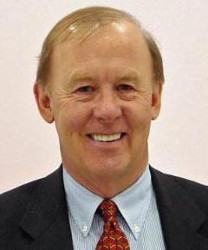Brand Naming, The Unsubtle (Trump) And The Subtle (Pharmaceuticals)
Posted by Elena del Valle on January 29, 2018
By Jay Gronlund
President, The Pathfinder Group

Jay Gronlund, president, The Pathfinder Group
Photo: Jay Gronlund
Most people think “branding” is simply about creating a catchy, memorable name for a product, service, organization and even people. However branding is much more complex. Good branding starts with the development of a message or impression that reflects the unique benefits and characteristics of that entity, and then creating a name that ideally communicates its qualities and personality to targeted customers. There are numerous approaches and philosophies for brand naming. Here are two contrasting examples: President Donald Trump’s tendency to coin descriptive, simplistic (and usually negative) labels on his adversaries that reflect his opinion of them, and the more subconscious, subliminal use of “phonologics” by pharmaceutical companies to create brand names for their products.
Despite his many faults, Trump is quite effective at creating and then repeating incessantly short and snappy, yet memorable brand names for people who might pose a threat to him, or whom he just doesn’t like. These labels create an immediate and lasting image of that person, which is particularly appealing to his core base of supporters who have strong emotional feelings for a straightforward outsider like Trump. These abbreviated nicknames are also ideal for social media like Twitter that offer limited content. Of course, other people see these names as simply an extension of Trump’s childish impulsiveness and insecurities, but they do stick. For example:
• “Crooked Hillary” – a tag that immediately denotes Trump’s interpretation of her dishonesty.
• “Lyin’ Ted Cruz” – Trump purposely misspells “lying” for added emphasis.
• “Little Rocket Man” – an obvious pun at the diminutive Kim Jung-un from North Korea
• “Pocahontas” – his slur for Elizabeth Warren, this moniker really upset many Navaho Indians recently
• “Liddle Marco Rubio” – Trump’s way to signal Rubio’s immaturity (again misspelled on purpose) which led to their debate on hand size during the campaign.
• “Leakin’ James Comey” – reviving the cadence of his “Lyin’ Ted Cruz”, Trump’s way for combating such criticism.
• “Sloppy Steve Bannon” – most recently to castigate Bannon for his severe criticism of Trump in Michael Wolf’s new book, Fire and Fury.
These are all consciously simplistic designed to communicate Trump’s intended impression that he wants the public to perceive. On the other end of the spectrum is an approach that builds on the subconscious innuendos that resonate subliminally and impact one’s emotions – the use of sound symbolism called “phonologics.” Because this involves a relationship between speech sounds and emotions, it is especially useful for international brands where everyone shares the same reaction to the sounds of certain consonants and vowels, even for fabricated brand names. For example, research by linguists shows that:
• “X” reflects hi-tech and innovation
• “Z” is the most active consonant, and connotes fast and daring
• “V” is very fast, big and energetic
• “C,D” are powerful, sound larger, often used for luxury goods
• “K, T, and P” are crisp, quick and also daring, generating good recall
• “S,L” imply pleasant feelings
• “Y” at the end of a word is more friendly, often found in nicknames.
Pharmaceutical companies use this process of sound symbolism extensively, convinced that physicians and end users perceive that the harder the tonality the more efficacious the product. Creating new words with the desired speech sounds has the same emotional impact in any language so it is ideal for international distribution. Here are just a few examples of their broad use of the letters “x” and “z”: Nexium, Clarinex, Celebrex, Xanax, Zyban and Zithromax.
Many drug companies combine this sound symbolism with other linguistic connotations. Viagra is full of these subconscious innuendos, for example. It rhymes with “Niagara”, known for honeymoons and water is linked with sexuality and life. The letter “v” connotes speed, energy and bigness too. The syllable “vi” sounds like the beginning of “vitality” and “vigor” as well.
Similar symbolism is shared by others in this category. Levitra comes from “elevate,” “le” indicates masculinity in French, and “vitra” alludes to “vitality.” Cialis, which is more about sensuality and romantic engagement, has the “s” sound which flows gently, the smooth “l” in the middle, and has no “stop consonants” (e.g. “p, b, d, and t”).
The common thread for both very different branding approaches is that the desired impression is first determined by what will appeal to and motivate the target voters or customers. Brand names are very important. To be effective branding must start with the content (i.e. the core message) and the imagery a marketer wants to communicate.
Jay Gronlund is founder of The Pathfinder Group, a business development firm specializing in emotional branding, ideation facilitation and international expansion. His background has included executive positions in marketing and new product development at reputable companies in the US and abroad. He is also vice president, managing director of Latin Pulse – USA, a marketing and research firm headquartered in Mexico City. Jay teaches branding at New York Universtity, and has a B.A. from Colby College and MBA from Tuck at Dartmouth.









